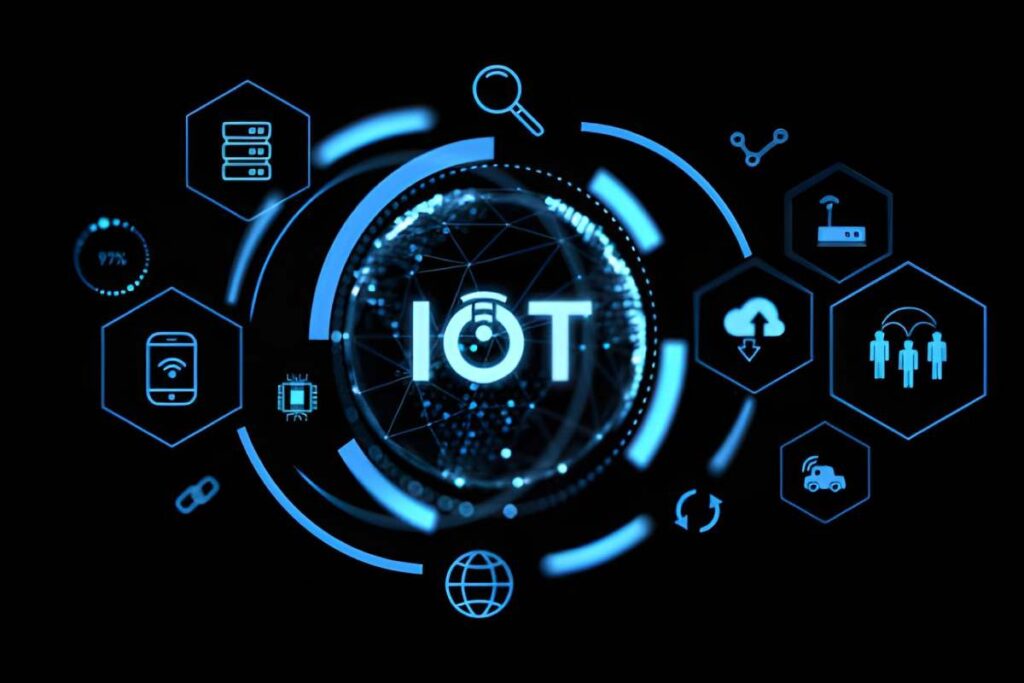The Internet of Things isn’t just something of the future. It’s a reality. It’s changing our everyday lives. Homes, businesses, and entire cities are becoming connected. Intelligent machines learn our preferences, and our clothes monitor our health. Machines constantly collect and exchange information, merging the real and online worlds. But how will they interact with each other in the future? We’re exploring new forms of interaction for IoT devices. shaping interconnected change.
The Challenge of Connectivity:
A good connection is essential for the efficient functioning of the Internet of Things. However, Wi-Fi and Bluetooth have limitations. Wi-Fi can suffer range and signal transmission issues, while Bluetooth only works over short distances. As more devices connect, these limitations become increasingly apparent. That’s why we need better and more reliable connection methods.
Emerging Trends in IoT Connectivity:
These are some interesting trends that are changing the way IoT devices are connected:
- Low-Power Wide Area Networks (LPWAN): Designed for the IoT, these networks provide long-range connectivity with low power consumption. They are suitable for battery-powered devices that need to transmit data over long periods of time. Some examples include LoRaWAN, Sigfox, and NB-IoT.
- Cellular Networks: 4G and 5G networks provide fast and reliable data transfer for real-time monitoring and industrial automation. 5G is characterised by low latency and high throughput, favouring future IoT development and faster data transfer.
- Satellite Communications: In areas without traditional connectivity, satellites can be a solution. Advances in this technology make it more accessible, especially for IoT applications in agriculture and environmental monitoring.
- Edge Computing: These technologies are changing how data is process in the IoT. Instead of using central servers in the cloud, data is processed closer to the devices. This reduces latency, response times, and network traffic for more efficient and secure IoT setups.
The Role of Fibre Optic Infrastructure:
Regardless of the connection option chosen, a reliable underlying infrastructure is crucial. This is where fibre optic internet comes in. Fibre optic cables convey data using light pulses, providing unmatched speed, reliability, and low latency. Here’s how fibre optic internet is enabling the Internet of Things:
- High bandwidth: Fibre optic networks offer ample bandwidth for transmitting large volumes of data from IoT devices.
- Low latency: The low signal latency of fibre optic networks is critical in real-time applications such as industrial control and remote surgery.
- Scalability: Fibre optic networks can be expanded to support more connected devices in the future.
The Security Imperative in a Connected World:
The more devices connect to the internet, the more we worry about our security. Cybercriminals have many ways to infiltrate our networks. So we need robust security measures. Here are some key points:
- Device security: Companies must ensure their products offer robust security, such as data obfuscation codes and secure login methods.
- Network security: Secure networks connecting devices require robust digital barriers, vulnerability detection systems, and access control methods.
- Data security: Data from devices must be encrypt during transmission, ensuring no one can access it or perform unauthoris actions while it is inaccessible.
The Future of a Connected World:
Combining these emerging IoT connectivity trends and the solid foundation of fibre internet ensures a future full of possibilities. Imagine a world where:
- Smart cities optimise traffic flow, manage energy consumption, and improve public safety through interconnected infrastructure.
- Connected factories improve production efficiency and streamline operations through real-time data analysis.
- Precision agriculture optimises resource use and crop yields through sensor-based data collection and automation.
The Road Ahead:
Constant change and collaboration are essential to developing the Internet of Things. As it evolves, new forms of connection will emerge, and existing ones will improve. By embracing these changes and prioritising security, we can effectively harness the potential of a world where technology becomes an integral part of our lives, helping us live, work, and communicate intelligently and effectively.
What Can You Do Today?
The exciting world of the Internet of Things isn’t just for tech giants and futurists. Here are some ways to start taking advantage of this interconnected process today:
- Smart Home Starter Kit: Try kits that remotely control lighting, thermostats, and other appliances.
- Wearable Devices: Consider a fitness tracker or smartwatch to monitor your health and activity.
- Smart Security System: Invest in an intelligent security system for added peace of mind and the ability to monitor your home remotely.
How Devices Will Speak to Each Other in the Future
The new Internet of Things isn’t just about individual machines, but an integrated network. Imagine a world where your smart heater detects your arrival home and adjusts the indoor temperature. Or the moment traffic lights exchange information to optimise traffic flow. This continuous exchange of information between machines is what we call the Symphony of Things, and it’s made possible by the new IoT channels mention above. LPWANs, cellular networks, space links, and edge computing will help create this symphony and forge a brighter, better future.
Frequently Asked Questions
What are the key Technology Tendencies in IoT for 2024?
Key technology trends in IoT include 5G-based IoT, edge computing, AI-powered IoT applications, digital twins, blockchain for IoT security, smart cities, IoT-powered healthcare, voice control for IoT devices, and Metaverse integration with IoT.
What influence will 5G have on the Internet of Clothes in 2024?
5G is expected to provide faster connection speeds than previous generations of mobile network technologies, allowing greater information to be transmitted between points at higher speeds.
What Role Does AI Play in the Future of IoT?
Managing information flows with real-time analytics power by artificial intelligence enables predictive maintenance, allowing for intelligent decisions to be made as need. Therefore, no industry can survive today without the Internet of Things.
What is the Significance of Superiority cComputing in IoT?
This allows data to be process closer to where it is create, thereby reducing latency between devices, increasing efficiency in that environment and improving the security of IoT systems.
How Does Block Chain come into Play Regarding IoT Security?
Blockchain is an integral part of securing communications between connected devices by creating transparent records that cannot be retroactively altered or corrupt without the consensus of all stakeholders.
How are Smart Cities Leveraging IoT in 2025?
Smart cities use IoT technologies to optimise infrastructure, reduce traffic congestion, and improve public safety. Using real-time heat maps, smart meters, and predictive analytics, urban planners leverage data to make more informed decisions. These advances reflect the latest trends in internet technologies, contributing to improved urban quality of life and resource efficiency.
What is the Role of Digital twins in future IoT trends?
Digital twins are simulated models of physical assets or systems that allow industries to test real-world scenarios without risk. As part of future IoT trends, they facilitate predictive maintenance, risk assessment, and smarter operations in manufacturing, logistics, and healthcare sectors. Their use is booming alongside other emerging IoT technologies.
What are some security risks link with IoT devices?
As more devices become interconnected. IoT security risks such as data leaks, malware, and unauthorised access increase. Blockchain, advanced encryption, and regular firmware updates are crucial to countering these threats. Securing the future of IoT relies heavily on proactive and scalable security strategies.
How does Mapsted contribute to IoT innovation?
Mapsted develops cutting-edge IoT solutions that enable real-time asset tracking and indoor positioning with minimal hardware. Its innovations support sectors such as healthcare and retail. Optimising workflows and enabling fast, accurate, data-driven decision-making, in line with emerging IoT technology trends.
Why is edge computing critical in the future of the Internet of Things?
Edge calculating processes data close to the source, reducing response times and bandwidth consumption. It is critical for response-sensitive environments such as industrial automation and autonomous vehicles. As part of the future Internet of Things, it enables faster analytics, greater privacy, and improved system reliability in constantly evolving internet technologies.

